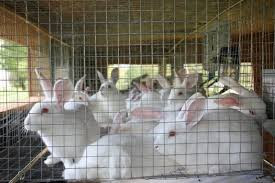
BY MTHANDAZO NYONI ZIMBABWE, which is home to 4,3 million goats, should claim a lion’s share of the US$180 million goat milk cosmetics revenue attributed to Africa in the next five years, an expert has said.
Farmers who attended a recent goat breeding workshop were told that milk from the animal was now being used in the production of an assortment of cosmetics worldwide, which they could tap into and unlock foreign currency revenues.
In a presentation made at the goat production conference held in Harare recently, Chrispa Body Solutions director Mhonda Sibanda said globally, the goat milk cosmetics market was valued at US$3,18 billion in 2021 and is projected to reach US$5,19 billion by 2027.
He said the goat milk cosmetics market in North America and Europe was more established, while APAC (Africa Pacific), Latin America, the Middle East and Africa regions were experiencing rapid expansion.
Growth in the region is being fueled by expanding skincare awareness and a growing skincare trend in the industry, he said.
“Zimbabwe should claim a lion’s share of the US$180 million goat milk cosmetics revenue attributed to Africa between 2022 and 2027,” Sibanda said.
According to Sibanda, Johnson & Johnson observed that worldwide, about 20% of children and up to 3% of the adult population have some form of eczema. About 70% of the eczema cases start in children younger than five years old, and about 60% of infants who have eczema continue to have one or more symptoms in adulthood.
“Unfortunately, in Africa little attention is paid to our children suffering from this scourge, yet the solution is in our hands. Women are not only being burdened by these suffering children but they are the most involved in the skincare business,” he said.
- Chamisa under fire over US$120K donation
- Mavhunga puts DeMbare into Chibuku quarterfinals
- Pension funds bet on Cabora Bassa oilfields
- Councils defy govt fire tender directive
Keep Reading
“Women are, therefore, encouraged to actively participate in the production of skincare ingredients and skincare products, distribution and administration of the same products.”
The key ingredients of goat milk skincare products are milk, organic oils, essential oils like aloe vera, avocado oil, sunflower oil, and others. Butters like cocoa butter, mango butter, shea and bee wax are also ingredients.
Sibanda said a number of these ingredients could be produced in Zimbabwe but “we are actually importing most of them, including some milk.”
“Products like aloe vera, do well in rocky and arid areas which are deemed not arable. More goat milk is required to grow the industry,” he said.
Sibanda said so far there were no official or documented reports on the performance of goat milk cosmetics in Africa.
However, he said the general cosmetics and beauty products market in Africa was poised for unprecedented growth.
“African consumers have long been asking for products adapted to their hair, skin and body specificities. Africa remains a largely untapped market where consumers are screaming out for quality products adapted to their specific needs,” he said.
“Different needs also exist in terms of skin care, as anti-ageing products specific to African consumers start trickling in and so are the products to tackle dark spots, blackheads and uneven and climate induced complexion and skin texture.”
In terms of hair care, Sibanda said it was a well-known fact that the biggest challenge for many Africans was combing their hair — which itself can be painful at times.
“Product tailoring is the key to winning the African battle, provided the products remain affordable and accessible.
“Therefore, cost and R&D (research and development) competitiveness are critical in the skincare sector in Africa,” he said.
“As it is, the saying that the early bird catches the worm will ring true for those who jump at the opportunity sooner rather than later,” added Sibanda.
According to official figures, goat population in Zimbabwe increased from 4 million last year to 4,3 million this year.
There are different breeds of goats used for commercial goat farming in Zimbabwe including the boer, mashona, matabele and kalahari.
- Follow Mthandazo on Twitter @MthandazoNyoni











